
The PlayStation Portable (PSP) is a handheld game console developed and marketed by Sony Computer Entertainment. It was first released in Japan on December 12, 2004, in North America on March 24, 2005, and in PAL regions on September 1, 2005, and is the first handheld installment in the PlayStation line of consoles. As a seventh generation console, the PSP competed with the Nintendo DS.

Lumines: Puzzle Fusion is a 2004 puzzle game developed by Q Entertainment and published for the PlayStation Portable by Bandai in Japan and by Ubisoft elsewhere. The gameplay tasks players to arrange descending two-colored 2×2 blocks to create 2×2 squares of matching color. A vertical line called the "time line" sweeps across the field, erases completed squares, and awards points. Each stage has a skin that affects the background, block colors, music, and the speed of the time line.

WWE SmackDown! vs. Raw 2006 is a professional wrestling video game and developed by Yuke's that was released on the PlayStation 2 and PlayStation Portable by THQ in 2005. It is part of the WWE SmackDown vs. Raw video game series based on the professional wrestling promotion World Wrestling Entertainment (WWE), and is the successor to the 2004 game of the same name. SmackDown! vs. Raw 2006 was also the first game in the series to be released on PlayStation Portable and the last game in the SmackDown!/SmackDown! vs. Raw series that was PlayStation exclusive.

Test Drive Unlimited is a 2006 racing video game developed by Eden Games and published by Atari for Xbox 360 and Microsoft Windows. Atari Melbourne House developed the PlayStation 2 and PlayStation Portable versions. Being the eighteenth entry in the Test Drive series, Unlimited serves as a reboot of the franchise, discarding the continuity of the previous games. The game features over 125 licensed sports cars and motorcycles and the terrain is modeled after the Hawaiian island of Oʻahu that features over 1,000 miles (1,600 km) of roads and highways.
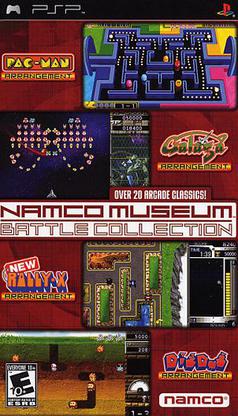
Namco Museum Battle Collection is a 2005 video game compilation developed by Tose and published by Namco for the PlayStation Portable; the first Namco Museum since the PS1 series to be developed in Japan. It includes 21 games - four of these are brand-new "arrangement" remakes of older Namco games, while the rest are emulated ports of Namco arcade games from the 1970s and 1980s. These ports include an options menu that allows the player to modify the in-game settings, such as the screen orientation and number of lives. Players can send one-level demos to a friend's console via the "Game Sharing" option in the main menu.
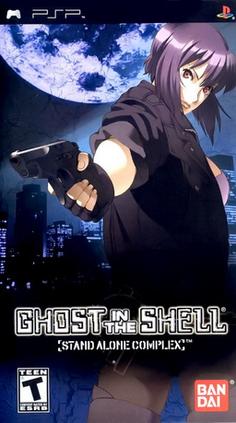
Ghost in the Shell: Stand Alone Complex, released in Japan as Kokaku Kidotai: Stand Alone Complex - Domain of the Hunters, is a first-person shooter video game based on the cyberpunk anime series Ghost in the Shell: Stand Alone Complex and a sequel to the first Ghost in the Shell: Stand Alone Complex game of the same title, developed by G-Artists and published for the PlayStation Portable by Sony Computer Entertainment and Bandai in 2005. It was released in Japan on September 15, 2005, in Europe on October 21, 2005 distributed by Atari Europe, and in North America on October 26, 2005, but releasing it under the same name as the original PS2 game caused confusion and misinterpretation of it as a port.

Kollon (ころん) is a 2003 Arcade puzzle game developed by MagicPot and published by CyberFront. Kollon was later ported to the PlayStation Portable as a launch title in 2004.
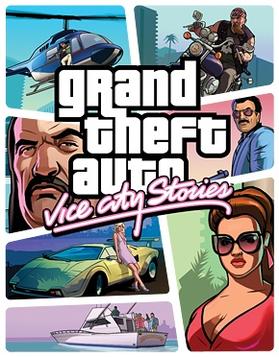
Grand Theft Auto: Vice City Stories is a 2006 action-adventure game developed by Rockstar Leeds and Rockstar North, and published by Rockstar Games. The tenth entry in the Grand Theft Auto series, the game was initially released as a PlayStation Portable exclusive in October 2006. A PlayStation 2 port was released in March 2007. Set within the fictional Vice City in 1984, the game is a prequel to 2002's Grand Theft Auto: Vice City and follows the exploits of ex-soldier Victor "Vic" Vance, a minor character originally featured in said game. The story centres around Vic's attempts to build up a criminal empire alongside his brother Lance. With the initial intention of raising money for his sick brother Pete's medication, Vic comes into conflict with rival gangs, drug lords and other enemies.

Daisenryaku is a series of war strategy video games by SystemSoft and SystemSoft Alpha in Japan. The series debuted in Japan in 1985 with Gendai Daisenryaku exclusively for the NEC PC-98.

Star Wars Battlefront: Renegade Squadron is a third-person shooter video game based on the Star Wars franchise. It is the third entry in the Star Wars: Battlefront series and the first handheld exclusive. It was released on October 9, 2007, in North America and later in Australia and Europe, as a PlayStation Portable (PSP) exclusive. Renegade Squadron was one of the first games available in a bundle pack with the newly released PSP redesign.
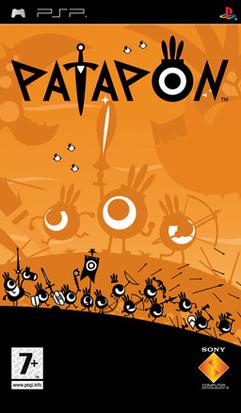
Patapon is a 2007 video game developed by Pyramid and Japan Studio and published by Sony Computer Entertainment for the PlayStation Portable (PSP). The game's unique genre was described to be a combination of rhythm and strategy. The game's concept and design were conceived when game designer Hiroyuki Kotani discovered the Patapon designs from French artist Rolito's personal website. The name Patapon was created by Rolito and was inspired by an old French word for "children". Kotani chose the name because it sounded similar to marching and drumming. It was released in Japan in December 2007 and in February 2008 for North America and Europe.
PlayStation is a video gaming brand that consists of five home video game consoles, two handhelds, a media center, and a smartphone, as well as an online service and multiple magazines. The brand is produced by Sony Interactive Entertainment, a division of Sony.
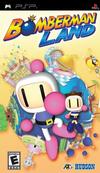
Bomberman Land, known in Japan as Bomberman Land Portable, is a video game released for PlayStation Portable on 21 March 2007 in Japan, and in North America and the PAL region in 2008. Part of the Bomberman franchise, it is the sixth game in the Bomberman Land series and the portable counterpart to the console version released for the Nintendo Wii in the same month.

Space Invaders Extreme is a re-vamped incarnation of the classic arcade game Space Invaders. The DS and PSP versions were released to mark the 30th anniversary of Space Invaders which saw its original arcade release in 1978. An HD version of the game has been remastered by Backbone Entertainment for Xbox Live Arcade with new four-player multiplayer modes and visualizer backgrounds by Jeff Minter, it was released on 6 May 2009 as a wrap-up to the 30th anniversary. The game is played at a fast pace with an electronic soundtrack and sound effects.
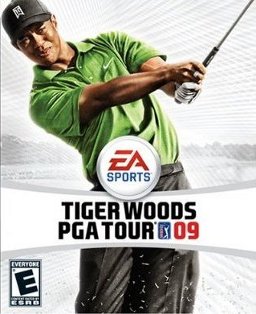
Tiger Woods PGA Tour 09 is a sports video game developed by EA Tiburon for the PlayStation 3, Wii and Xbox 360 versions and Exient Entertainment for the PlayStation 2 and PlayStation Portable versions and published by EA Sports for PlayStation 2, PlayStation 3, PlayStation Portable, Wii and Xbox 360.

Colin McRae: Dirt 2 is a racing video game developed and published by Codemasters in 2009, first for the Nintendo DS, PlayStation 3, PlayStation Portable, Wii and Xbox 360, and then later for PC platforms. It is the sequel to Colin McRae: Dirt. Dirt 2 is the first game in the series since McRae's death in 2007 and the last to feature his name in the title. It is also the first and only game in the series to be available on a Nintendo home console and the last game in the series to be released on handhelds.

Dynasty Warriors: Strikeforce, originally released in Japan as Shin Sangokumusou Multi Raid, is a hack and slash video game for the PlayStation Portable. It is based on Dynasty Warriors 6. It was released in February 2009 in Japan and Q2 2009 in North America, Europe, and Australia. A console release of the game for the PlayStation 3 and Xbox 360 was released in Japan on October 1, 2009. American and European versions followed in February 2010. Its sequel Shin Sangokumusou Multi Raid 2 was released in Japan on March 11, 2010 for the PlayStation Portable, and on July 26, 2012 for PlayStation 3.
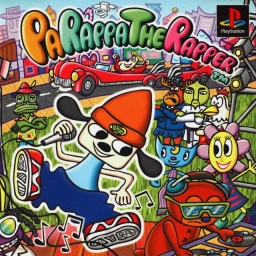
PaRappa the Rapper is a rhythm video game developed by NanaOn-Sha and published by Sony Computer Entertainment for the PlayStation in Japan in 1996 and worldwide in 1997. Created by music producer Masaya Matsuura in collaboration with artist Rodney Greenblat, the game features unique visual design and rap-based gameplay and is considered the first true rhythm game. It was ported to the PlayStation Portable in 2006 in celebration of its 10-year anniversary. A remastered version of the original PlayStation game was released for PlayStation 4 in 2017 for the game's twentieth anniversary.

LittleBigPlanet is a puzzle-platform game for the PlayStation Portable developed by SCE Studio Cambridge in conjunction with Media Molecule and published by Sony Computer Entertainment. An addition to the LittleBigPlanet franchise made for the PSP, featuring a brand new story mode. It was released on 17 November 2009 in North America and 20 November 2009 in PAL regions. The game's servers have been shut down since July 30, 2016.

Patapon 3 is a rhythm game for the PlayStation Portable and sequel to Patapon 2. It was developed by Pyramid and Japan Studio and published by Sony Computer Entertainment. Gameplay is similar to previous titles, but has a greater focus on multiplayer than Patapon 2. Like its predecessors, Patapon 3 is presented in a cartoonish, silhouetted two-dimensional environment designed by French artist Rolito, now with more detailed backgrounds.



















